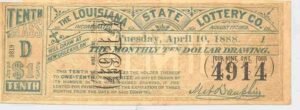8.3 Rules for Material Conditionals
This module introduces the rules of modus ponens and modus tollens, as well as the fallacies of affirming the consequent and denying the antecedent. It also introduces the rule of implication, to convert between conditionals and disjunctions.
Modus ponens is especially useful for representing an argument that one claim follows from another, and modus tollens is especially useful for representing an argument that one claim should be rejected because it would lead to something false.
Table of Contents
- 8.3 Rules for Material Conditionals
8.3.1 The Rule of Modus Ponens

Modus Ponens must follow the direction of the arrow.
Modus Ponens (MP)
The rule of modus ponens is the following intuitive pattern of inference:
- P
- P => Q
- Q (1, 2 MP)
For example:
- Edna sold the chickens.
- If Edna sold the chickens, then Edna has some cash.
- Edna has some cash. (1, 2 MP)
The order of the first two premises doesn’t matter. The following form of argument is also valid and also modus ponens:
- P => Q
- P
- Q (1, 2 MP)
The rule of modus ponens is sometimes called “conditional elimination” and abbreviated =>E, since in a sense it “eliminates” the conditional on the previous line.
We can prove the rule is valid using a truth table:
| P | Q | 1. P | 2. P => Q | 3. Q |
| T | T | T | T | T |
| T | F | T | F | F |
| F | T | F | T | T |
| F | F | F | T | F |
The only row on which both premises are true is the first row, and in that row the conclusion is also true. So, the pattern of inference is valid.
Notice that modus ponens only applies when => is the main connective of the sentence. So, the following is valid:
- P => (Q v R)
- P
- Q v R
But the following is not an application of modus ponens:
- P v (Q => R)
- Q
- P v R (!!INVALID!!)
Affirming the Consequent
Be sure not to confuse the valid rule of modus ponens with the fallacy of affirming the consequent.
- P => Q
- Q
- P (!!INVALID!!)
For instance:
- If it is raining, then it is wet outside.
- It is wet outside.
- It is raining (!!INVALID!!)
This inference is valid. Modus ponens must go in the same direction as the => arrow in P => Q: it must go forward, from the premise that P to the conclusion that Q. It can’t be used in reverse, from the premise that Q to the conclusion that P.
8.3.2 Complex Uses of Modus Ponens

Don’t try to figure a proof out in advance; just relax and apply the rules.
Image Credit Andrew Guthrie[CC BY 2.0 (https://creativecommons.org/licenses/by/2.0)], via Geograph.org.UK
Series of Modus Ponens
A proof is an argument which applies only valid rules of inference. Sometimes it is useful to apply modus ponens multiple times in a sequence within a proof. For instance, suppose we have these basic premises:
- H => G
- G => R
- H
- R => K
- K => ~Z
Suppose that we want to derive as a conclusion ~Z. We can indicate this by writing, in brackets after the last premise, the slash /, followed by the letter C., followed by what we want to conclude. We use brackets to remember that we can’t use [/C. ~Z] within the proof, but it tells us what we are aiming for by the end of the proof. It is written like so:
- H => G
- G => R
- H
- R => K
- K => ~Z [/C. ~Z]
Now, what should follow these steps? Well, first, we can apply modus ponens to lines 1 and 3:
- G (1, 3 MP)
Now we are able to apply modus ponens to lines 2 and 6:
- R (2, 6 MP)
And so we continue:
- K (4, 7 MP)
- ~Z (5, 8 MP)
We now have a proof, from premises 1-5, of the conclusion ~Z. We know that ~Z follows from premises 1-5, because we used only a valid rule of inference on each step.
Modus Ponens with Other Rules
We can also apply modus ponens together with other rules in a multiple-step proof. Modus ponens, or any other valid rule, can cite any prior line in the proof. Here is an example:
- ~(B & N)
- K => (J => N)
- ~(~K v ~J) [/C. ~B v L]
At first, this proof might look pretty scary and foreboding! How in the world would we ever get ~B v L from these premises?
If you try to figure it out by imagining it happening all at once in your head, then unless you have lots of practice in logic, you will never solve the puzzle. On the other hand, if you focus on just one step at a time, and trust that so long as you only apply valid rules of inference there are no wrong steps (though there may be longer and shorter routes to the conclusion), then eventually you will get there. Let’s work through this example, step by step, using the rules of inference we know.
- ~(B & N)
- K => (J => N)
- ~(~K v ~J) [/C. ~B v L]
First, we recognize that line 1 and line 3 are cases where we could apply De Morgan’s law:
- ~B v ~N (1 DEM)
- ~~K & ~~J (3 DEM)
It may not be obvious what we will do with lines 4 or 5, but it doesn’t have to be. We don’t need to figure out the whole proof at once; it is enough to apply the rules we know, step by step. Next, we notice that the rule of &E applies to line 5:
- ~~K (5 &E)
- ~~J (5 &E)
And the rule of double negation applies to lines 6 and 7:
- K (6 DN)
- J (7 DN)
Again, we may not know yet where all this is going, but so long as we are applying the rules correctly, we’ve done no harm. Now, notice that we can apply modus ponens to line 2 and line 8:
- J => N (2, 8 MP)
And after this, modus ponens applies to lines 9 and 10:
- N (9, 10 MP)
Now, we need to think a bit. Which premise in the argument hasn’t been used yet? Line 2. Is there any way we could make use of line 2 in our argument?
There is. Notice that we can apply double negation to line 11:
- ~~N (11 DN)
But this means that disjunctive syllogism applies to line 2 and line 12:
- ~B (4, 12 DS)
We’re now very close. How might we get from line 13 to our conclusion, ~B v L? Well, remember the rule of vI allows us to add any disjunct we like to something we established on a prior line. So, we can conclude:
C. ~B v L (13 vI)
And there, we’ve completed the proof!
The proofs you are assigned in this class will not typically be this complex. The same thinking will be important, however: first, apply the rules that you know apply, and then see what remains to get to the conclusion.
8.3.3 Using Modus Ponens to Produce Validity

Is it the case that if someone is smiling, then they are happy?
Making An Argument Valid
Suppose that you have a reason, or list of reasons, which seem like they ought to lead to a certain conclusion:
Reason. These roses are red.
Conclusion. These roses are not blue.
or
Reason. Coffee is hot.
Reason. Coffee is in my mouth.
Conclusion. My mouth is not frozen.
When symbolized, however, the arguments are invalid:
R = These Roses are Red
B = These Roses are blue
1. R
C. ~B
C = Coffee is hot
M = Coffee is in my mouth
F = My mouth is frozen.
1. C
2. M
C. ~F
We can repair these invalid arguments by adding a conditional premise and then applying the rule of modus ponens. The conditional would place the other premise(s) in the antecedent (as a conjunction of the other premises, if there are multiple other premises), and then put the conclusion in the consequent. Now the arguments would be valid. For instance:
1. R
2. R => ~B
C. ~B (1, 2 MP)
that is:
1. These roses are red.
2. If these roses are red, then these roses are not blue.
C. These roses are not blue. (1, 2 MP)
or
- C
- M
- (C & M) => ~F
- C & M (1, 2 &I)
- ~F (3, 4 MP)
that is:
- Coffee is hot
- Coffee is in my mouth
- If Coffee is hot and coffee is in my mouth, then my mouth is not frozen.
- Coffee his hot and coffee is in my mouth (1, 2 &I)
- My mouth is not frozen (3, 4 MP)
Any invalid argument can be made valid using this method: simply place one of the other premises, or a conjunction of the other premises, in the antecedent of a conditional, and then put the conclusion you want in the consequent, and then add the conditional that results.
So:
1. P
C. Q (!!INVALID!!)
becomes:
1. P
2. P => Q
C. Q (1, 2 MP)
Of course, the argument might not be sound. The conditional premise which was added might not be as likely as the original premise. So, while the argument is valid, the argument now includes a premise which might be more vulnerable to objections than the other premises. For instance suppose it is clear for everyone who sees Jeff’s face that Jeff is smiling. We try to repair this invalid argument:
1. Jeff is smiling.
C. Jeff is happy (!!INVALID!!)
We add a conditional premise:
1. Jeff is smiling.
2. If Jeff is smiling, then Jeff is happy.
C. Jeff is happy (1, 2 MP)
The argument is now valid. The second premise, however, is not something that we can verify simply by looking at Jeff’s face. Should we accept the claim that “If Jeff is smiling, then Jeff is happy?” We would have to know something more than the fact that Jeff is smiling to know that this is true. So, while valid, the argument might or might not be sound, depending upon whether the conditional premise we have added is true.
8.3.4 The Rule of Material Contraposition

Contraposition flips a conditional upside down.
Image Credit: Tomasz Sienicki under GNU Free Documentation License (https://en.wikipedia.org/wiki/GNU_Free_Documentation_License) via Wikipedia
Material Contraposition (CTRA-MA)
We’ve previously studied a rule called the “Contraposition of Categoricals” (CTRA-CG):
- All S are P.
- All Non-P are Non-S. (1, CTRA-CG)
In this rule, we switch the order of the first and second term, and then negate each of them.
A similar rule applies to material conditionals. (At a deeper level, it is in fact the same principle). In the rule of Material Contraposition (CTRA-MA), we switch the order of the antecedent and the consequent, and then negate each:
- P => Q
- ~Q => ~P (1, CTRA-MA)
For example:
- If you drive legally, then you have a license.
- If you don’t have a license, then you don’t drive legally. (1, CTRA-MA)
The rule also allows us to go in reverse, from a conditional where the antecedent and consequent are both negated, by switching their order and removing the negation:
- ~Q => ~P
- P => Q (1, CTRA-MA)
We can prove this rule is valid using a truth table, since P => Q is logically equivalent to ~Q => ~P:
| P | Q | ~P | ~Q | 1. P => Q | 2. ~Q => ~P |
| T | T | F | F | T | T |
| T | F | F | T | F | F |
| F | T | T | F | T | T |
| F | F | T | T | T | T |
Think of contraposition like flipping the conditional “upside down”. It is necessary both to reverse the order, but also to negate each side.
Contraposition and Parentheses
The rule applies regardless of the complexity of the premise, so long as we don’t modify anything but the order of what is on either side of the => sign, and adding or removing a negation for each:
1. (T v F) => (G => (A => S))
2. ~(G => (A => S)) => ~(T v F)
If this looks confusing, imagine first re-symbolizing everything in parentheses within the antecedent and the consequent as separate sentences:
X = (T v F)
Y = (G => (A => S))
Now, use this to rewrite the premise:
1. (T v F) => (G => (A => S))
1*. X => Y (rewriting 1)
next, apply the rule, and then re-translate:
2. ~Y => ~X (1*, CTRA-MA)
2*. ~(G => (A => S)) => ~(T v F) (rewriting 2)
How about this example?
1. ~((S v B) v A) => ~(G => L)
First, let:
X = ((S v B) v A)
Y = (G => L)
Then:
1. ~((S v B) v A) => ~(G => L)
1*. ~X => ~Y (rewriting 1)
2. Y => X (1*, CTRA-MA)
2*. (G => L) => ((S v B) v A) (rewriting 2)
You don’t have to explicitly re-translate and rewrite premises within an argument: this is something you can do on your own using scratch paper. If we do explicitly re-translate and rewrite premises, however, we’ll use the convention of adding a * after the number of the premise we rewrite, and indicate this by citing the line after the word “rewriting”: i.e., (rewriting 2)
Fallacy Warning
While material contraposition is a valid rule, beware of the fallacy of the “communication of conditionals”, which switches the order of the antecedent and the consequent without negating each:
1. P => Q
2. Q => P (!!INVALID!!)
For instance
1. If Mark is contagious, then Mark is sick.
2. If Mark is sick, then Mark is contagious. (!!INVALID!!)
We can prove this fallacy would be an invalid rule with a truth table:
| P | Q | 1. P => Q | 2. Q => P |
| T | T | T | T |
| T | F | F | T |
| F | T | T | F |
| F | F | T | T |
Notice that in the third row, the premise is true, but the conclusion is false. So, remember to negate both the new antecedent and the new consequent when ‘flipping’ their order using material contraposition.
8.3.5 The Rule of Modus Tollens

If a road is closed, then you have to turn around.
The Rule of Modus Tollens (MT)
The rule of Modus Tollens says that, given a conditional and the negation of the consequent of that conditional, we may conclude the negation of the antecedent of that conditional:
- ~Q
- P => Q
- ~P (1, 2 MT)
For example:
- The park isn’t crowded.
- If it is Saturday, then the park is crowded.
- It isn’t Saturday. (1, 2 MT)
Again, the rule applies regardless of the order of the two premises cited:
- P => Q
- ~Q
- ~P (1, 2 MT)
And again, the rule also applies regardless of the complexity of what appears on either side of the conditional, so long as we remember to keep everything within parentheses fixed:
- (V v P) => (N => ~W)
- ~(N => ~W)
- ~(V v P) (1, 2 MT)
Proving the Rule is Valid
We can prove that Modus Tollens is a valid rule by deriving it from rules we already know to be valid, Modus Ponens and Material Contraposition:
- P => Q
- ~Q
- ~Q => ~P (1, CTRA-MA)
- ~P (2, 3 MP)
In other words, anything which we prove using modus tollens, we could have proven using contraposition followed by modus ponens. Since we know that these two rules are valid, we know that modus tollens is valid also. Modus tollens is not necessary for the completeness of a system of rules of inference for propositional logic: we could do just fine without it, provided we had other rules that did the same work. We learn the rule, however, because it is very useful.
Denying the Antecedent
Don’t confuse the valid rule of modus tollens with the fallacy of denying the antecedent, which is an invalid form of inference:
- P => Q
- ~P
- ~Q (!!INVALID!!)
For instance:
- If it is Saturday, then the park is crowded.
- It isn’t Saturday
- The park isn’t crowded.
The fallacy of denying the antecedent often results from misinterpreting a conditional as a biconditional. After all, the following two inferences would be valid:
- P <=> Q
- ~P
- ~Q
or
- It is Saturday if, and only if, the park is crowded.
- It isn’t Saturday
- The park isn’t crowded.
Remember that, if the arrow points from left to right ⇒ then any positive inference must go from left to right, and any negative inference must go in reverse. Imagine the arrow in material implication in A => B like a one-way road from A to B. If want to get to B, you have to first get A: the rule of Modus Ponens. You can’t go from B to A, however, which is the fallacy of affirming the consequent. If B is closed, then you mustn’t travel down A: the rule of modus tollens. But the fact that A is closed doesn’t mean there’s no way to get to B, which would be the fallacy of denying the antecedent, since there might be some other route to B.
8.3.6 Using Modus Tollens to Reject a Claim

If a road leads you off the edge of a cliff, then it’s not a good road.
Falsehoods Lead to Falsehoods
One of our intellectual virtues, the virtue of intellectual caution, warns us to be cautious to avoid formulating a belief without considering what else that belief might entail. For instance, if you want to explain why it is so hot outside today, then you might attribute today’s temperature to global warming; but this would be problematic down the road, because you would then need to attribute cold days to global cooling. (Global warming explains average changes in temperature patterns over decades, not daily highs or lows).
Or, for instance, suppose that one of your friends is accused of a crime. You might want to believe that your friend is innocent. But if your friend is accused by multiple witnesses who are also your friends, then believing one friend is innocent would require believing all of your other friends were liars. So, it is important to consider what a belief might entail.
Applying Modus Tollens
A general principle of sound reasoning this: if a claim leads to something we know to be false, then we know the claim itself must be false. We can use modus tollens to represent this pattern of reasoning and to make an argument formally valid. For instance, this argument is invalid:
- Your other friends are not lying.
- Your friend is not innocent. (!!INVALID!!)
However, we can add a premise with a conditional in it, where the conclusion sans negation is in the antecedent, and the first premise sans negation is in the consequent, and then apply the rule of Modus Tollens to make the argument valid.
- Your other friends are not lying.
- If your friend is innocent, then your other friends are lying.
- Your friend is not innocent. (1, 2 MT)
Suppose we symbolize as follows:
L = Your other friends are lying
I = Your friend is innocent
This argument is invalid:
- ~L
- ~I
But this argument would be valid:
- ~L
- I => L
- ~I
Again, suppose that you want to argue:
- Global cooling isn’t the main reason it was cold yesterday.
- Global warming isn’t the main reason it is hot today. (!!INVALID!!)
You can make the argument valid through Modus Tollens. First, let’s symbolize:
C = Global cooling is the main reason it was cold yesterday.
H = Global Warming is the main reason it is hot today.
So, our invalid argument is:
- ~C
- ~H (!!INVALID!!)
To make it valid we add a conditional, with the conclusion sans negation in the antecedent, and the premise sans negation in the consequent.
- ~C
- H => C
- ~H (1, 2 MT)
Which becomes:
- Global cooling isn’t the main reason it was cold yesterday.
- If global warming is the main reason it is hot today, then global cooling is the main reason it was cold yesterday.
- Global warming isn’t the main reason it is hot today. (1, 2 MT)
8.3.7 The Rule of Material Implication

It is not the case that, if you buy a lottery ticket, then you will win.
Implication (IMPL)
Sometimes within an argument a conditional is more useful than a disjunction, or a disjunction is more useful than a conditional. The rule of implication allows us to switch between the two. A truth table shows that ~P v Q ≡ P => Q
| P | Q | ~P | ~P v Q | P => Q | (~P v Q) <=> (P => Q) |
| T | T | F | T | T | T |
| T | F | F | F | F | T |
| F | T | T | T | T | T |
| F | F | T | T | T | T |
So, we can represent the equivalence of a conditional to a disjunction with one negated disjunct, with the rule of implication:
- P => Q
- ~P v Q (1, IMPL)
For instance:
- If pork is on sale, then bacon is on sale.
- Either pork is not on sale, or bacon is on sale. (1, IMPL)
The other direction also works:
- ~P v Q
- P => Q (1, IMPL)
For instance:
- Either it’s not raining, or else it’s wet outside.
- If it is raining, then it is wet outside (1, IMPL)
Suppose, for instance, that we had these two premises, but wanted to prove that Q:
- ~B v Q
- B (/C. Q)
We could use implication as a step along the way to get there:
- B => Q (1, IMPL)
- Q (1, 3 MP)
Negated Conditional (NEGCON)
Another useful logical equivalence allows us to convert from conjunctions with one negated conjunct to a negated conditional, and vice versa. First, let’s create a truth table to show that P & ~Q ≡ ~(P => Q)
| P | Q | ~Q | P & ~Q | P => Q | ~(P => Q) | P & ~Q ≡ ~(P => Q) |
| T | T | F | F | T | F | T |
| T | F | T | T | F | T | T |
| F | T | F | F | T | F | T |
| F | F | T | F | T | F | T |
We can now use the rule of negated conditional like this:
- P & ~Q
- ~(P => Q) (1 NEGCON)
For example:
- You buy a lottery ticket, but you will not win.
- It is not the case that, if you buy a lottery ticket, then you will win.
We can also use it like this:
- ~(P => Q)
- P & ~Q (1 NEGCON)
For example:
- It is not the case that, if you work hard, you will always succeed.
- You work hard, but you will not always succeed.
When applying the rule of negated conditional, it is often most useful to phrase the conjunction using the word “but” in place of the word “and”.
Submodule 8.3 Quiz
Licenses and Attributions
Key Sources:
- Watson, Jeffrey (2019). Introduction to Logic. Licensed under: (CC BY-SA).
Next Page: 8.4 Practice with Material Conditionals
